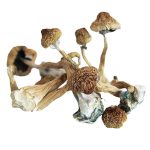Exploring the Enigma of Psychedelics: A Focus on LSD
The fascination with psychedelics spans generations, with LSD, or lysergic acid diethylamide, standing out as an exceptionally potent mind-altering substance. Unlike stimulants or opioids, psychedelics have a unique ability to reshape ordinary conscious experiences, tapping into non-everyday states of consciousness like trance, meditation, and even near-death experiences. Most psychedelic substances fall into three chemical families: tryptamines, phenethylamines, or lysergamides.
Navigating the Psychedelic Realm: A Spotlight on LSD
Decoding LSD: An In-Depth Exploration
Unveiling LSD: Lysergic acid diethylamide, or LSD, emerged in 1938 as a potent hallucinogen. Derived from lysergic acid in the ergot fungus on rye, LSD’s microgram dosage induces effects known as a “trip,” ranging from enthralling to mind-altering, occasionally leading to an uncomfortable experience called a “bad trip.”
LSD’s Varied Forms: Produced in crystalline form, LSD is blended or diluted into ingestible liquids, appearing on the streets as blotter paper, gelatin squares, capsules, liquid-soaked sugar cubes, and potent pure liquid form. Odorless, colorless, and slightly bitter, LSD’s diverse forms contribute to its elusive nature.
The Roles of LSD: A Mind-Altering Journey
Functioning as a mind-altering drug, LSD interacts with serotonin receptors in the brain. Serotonin, influencing behavior, mood, and perception, becomes central in LSD’s impact on conscious experiences.
The Spectrum of LSD Effects: Unpredictable and Unique
LSD’s physical effects vary, manifesting 30 to 45 minutes post-ingestion, peaking between 2 to 4 hours, and lasting 12 hours or longer. Intravenous administration yields faster effects within 10 minutes. Effects include hallucinations, distorted perception, altered auditory experiences, anxiety, depression, flashbacks, rapid heartbeat, elevated body temperature, and dilated pupils.
Long-Term Considerations: Exploring Personality Changes
Since the 1950s, the exploration of long-term personality changes due to psychedelic drug use has persisted. U.S. government experiments on LSD’s mind control potential fueled controversy during this period. Post-1985 studies, employing precise personality assessment methods, have progressed, yet conclusive findings require extensive research due to substance legalities.
In Conclusion: Unveiling Mysteries and Long-Term Impact
Within psychoactive substances, LSD stands as an unparalleled catalyst, unraveling consciousness and perception mysteries. Its effects, both captivating and challenging, prompt further exploration into potential long-term impacts on personality. As research advances and regulations shift, our understanding of psychedelics like LSD is destined to expand.
Visit Here: Explore eGift Cards
FAQs: Unraveling More About LSD
- Is LSD addictive? LSD is not considered physically addictive, and users typically do not develop a physical dependence. However, psychological dependence may occur in some cases.
- Are there therapeutic uses for LSD? While research is ongoing, some studies suggest potential therapeutic benefits of LSD, particularly in treating conditions like PTSD and depression.
- What safety precautions should be taken with LSD use? LSD use carries risks, including the possibility of a “bad trip.” It’s essential to use in a safe environment with a trusted individual present.
- Can LSD have positive long-term effects on personality? Research on LSD’s long-term effects is inconclusive. While some studies hint at positive outcomes, more extensive research is needed for a definitive answer.
- How does LSD compare to other psychedelics in terms of effects? LSD’s effects vary, but it is known for its potency and extended duration compared to some other psychedelics like psilocybin (found in magic mushrooms).
Remember, individual experiences with LSD may differ, and caution should be exercised when exploring its use.











